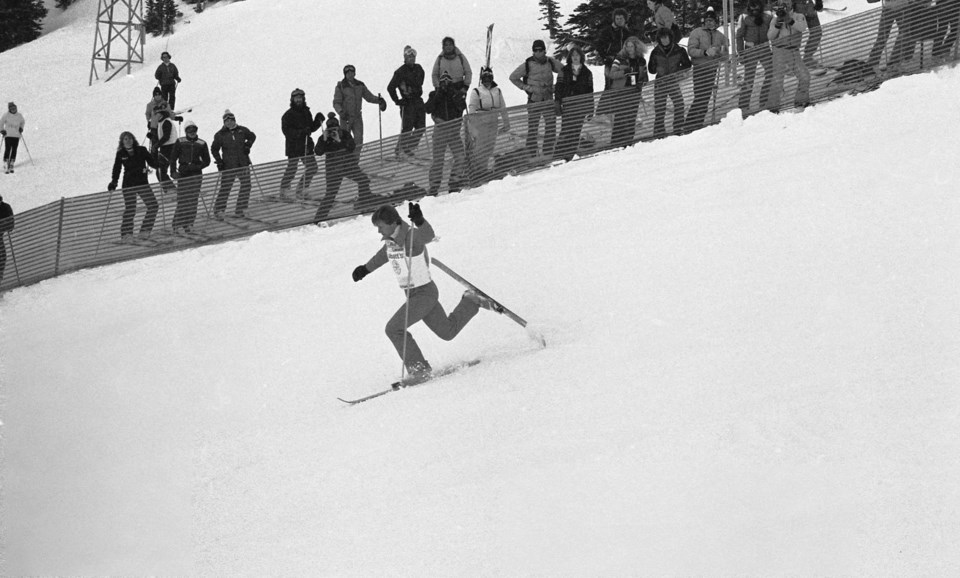People were flying through the air on skis long before the Wright brothers took to the sky. However, freestyle skiing, or “hotdogging” as it was once known, really took off in the 1970s. With few rules, the aim of hot dogging was to go down the slope in the most spectacular way possible.
Looking back at the evolution of freestyle skiing can feel like reading a different language. Even avid freestyle skiers today may not be familiar with the popular tricks from the 1970s, such as the Mule Kick, Back Scratcher or the Leg Breaker— however, you may be able to visualize the movement from the name. Other tricks were named after the first person to complete or popularize a manoeuvre, such as the Daigle Banger, named after Canadian ski legend Michel Daigle, who lived in Whistler and worked as a ski patroller and freestyle ski instructor. The Daigle Banger was a popular ski ballet move that involved a front flip and rotation with one hand planted on the snow.
In the 1960s, skiing followed a rigid structure with specific ideas about how a person “should” ski, and ski racing was the sole competitive focus. Freestyle skiing was born out of rebellion against the “rules” of skiing. While freestyle skiing was not always accepted by the competitive sporting bodies, it quickly became popular with spectators watching as the competitors put on a great show, combining speed, strength and imagination. In early competitions, it could be difficult to tell if a person was somersaulting down the hill on purpose, but initially it did not really matter. The scoring of very early hot dog competitions was largely based off of crowd reaction, and the cheering could be loudest after an entertaining crash.
Freestyle skiing was recognized by the International Ski Federation (FIS) in 1979, and the judges at the Freestyle World Cup were looking for a lot more than audience reaction. Made up of three disciplines, a competitor participated in moguls, aerials and ski ballet (also known as acroski) to become the overall Freestyle World Champion. While you have likely watched aerial and mogul competitions more recently, ski ballet fell out of favour in the early 1990s and never became an official Olympic sport.
Ski Canada Magazine from spring 1980 explained what spectators should expect when watching ski ballet. “The ballet competition is run on a smooth intermediate slope, each competitor performing a run made up of dance-like steps, spins and turns mixed with leaps and stunts. The degree of difficulty of the skier’s run is a major factor in his eventual score. His style, control, innovation as well as the fluidity of the routine count for most of the skier’s total score. Judges look for good choreography and interpretation of the music and well-constructed combinations of the basic manoeuvres. Often, the simplest manoeuvres are also the most difficult to execute well.”
Freestyle skiing has seen dramatic changes since the days of hotdogging, thanks to athletes constantly pushing the boundaries of the sport, as well as advances in equipment.




